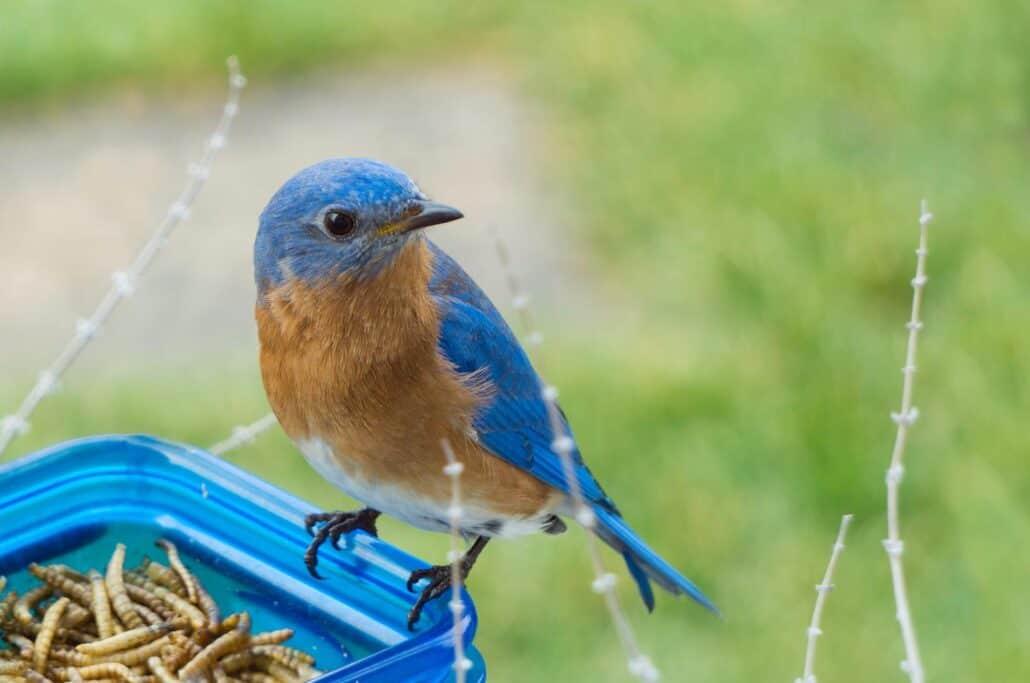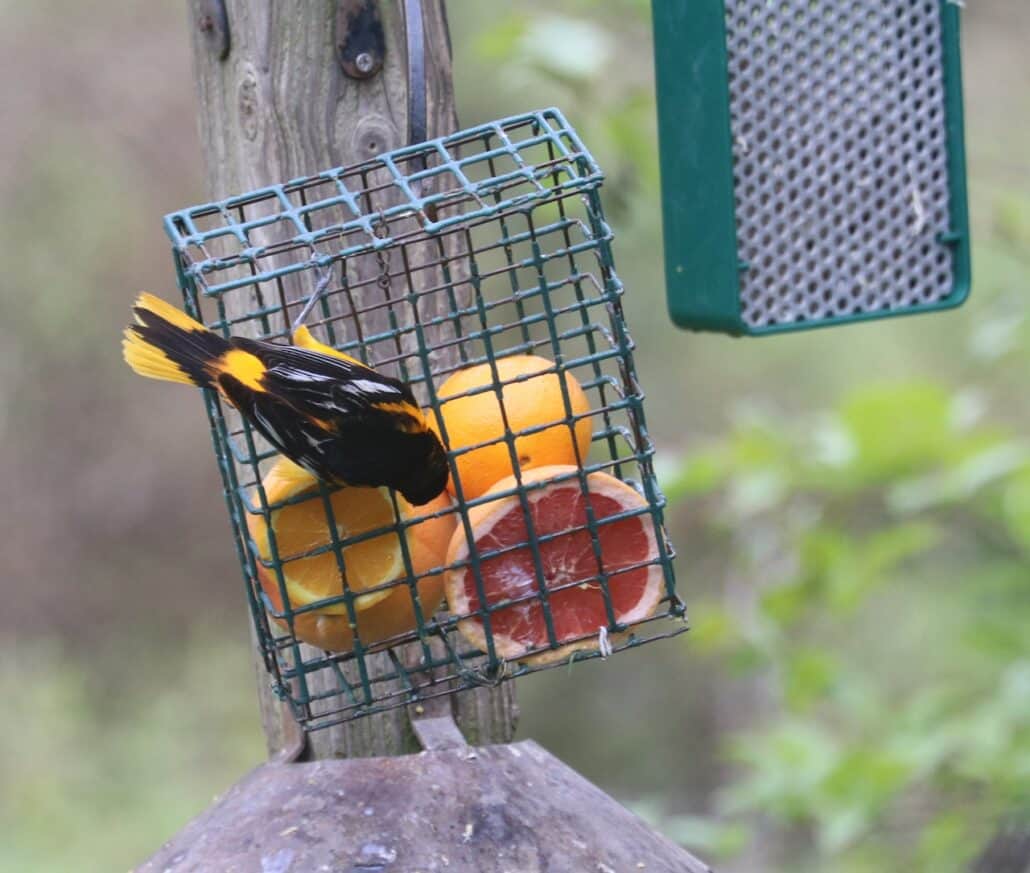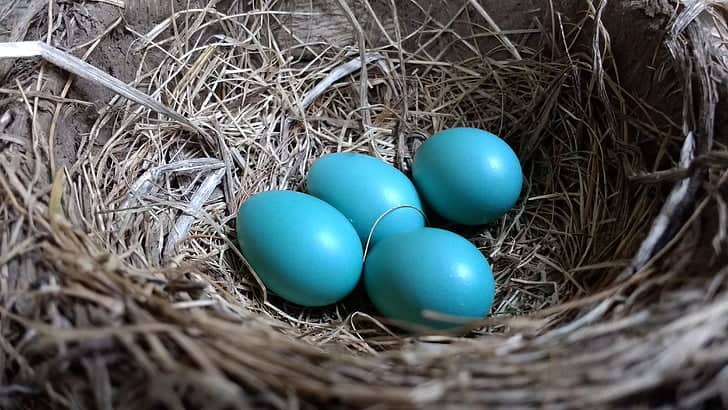
For the first time in the nearly seven years I’ve lived in this house, birds have nested on my front porch. Not one nest, but two: a robin and a mourning dove. I’ve long expected mourning doves to realize that the tops of the porch–roof support columns are wide enough for a nest, but it never happened until now, and, in fact, it was the robins who chose that site.
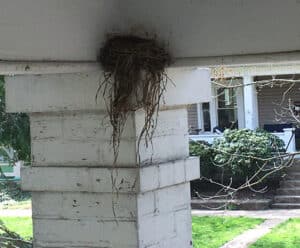
I was thrilled to see mud and long strands of decorative grass up there last week, but the wind blew down Ms. Robin’s initial efforts twice. Still, she persisted, and the third time was the charm. It took several days for her to build a true mud-and-grass cup. That was three days ago, and there are three eggs in it this morning. The nest seemed to have been abandoned for the past couple of days, but she began incubating full time this morning. Robins lay one egg per day, but don’t start incubating until the third or fourth egg is laid. Maybe she’ll lay Number 4 tomorrow. For the next two weeks or so, she’ll spend most of the day and all night there, if all goes well. Male robins don’t help with incubation, and they rarely bring their incubating mate food. The babies will hatch over a two– or three–day period, and then we’ll have nestlings for another two weeks before the young drop to the ground for a few days before figuring out how to fly.
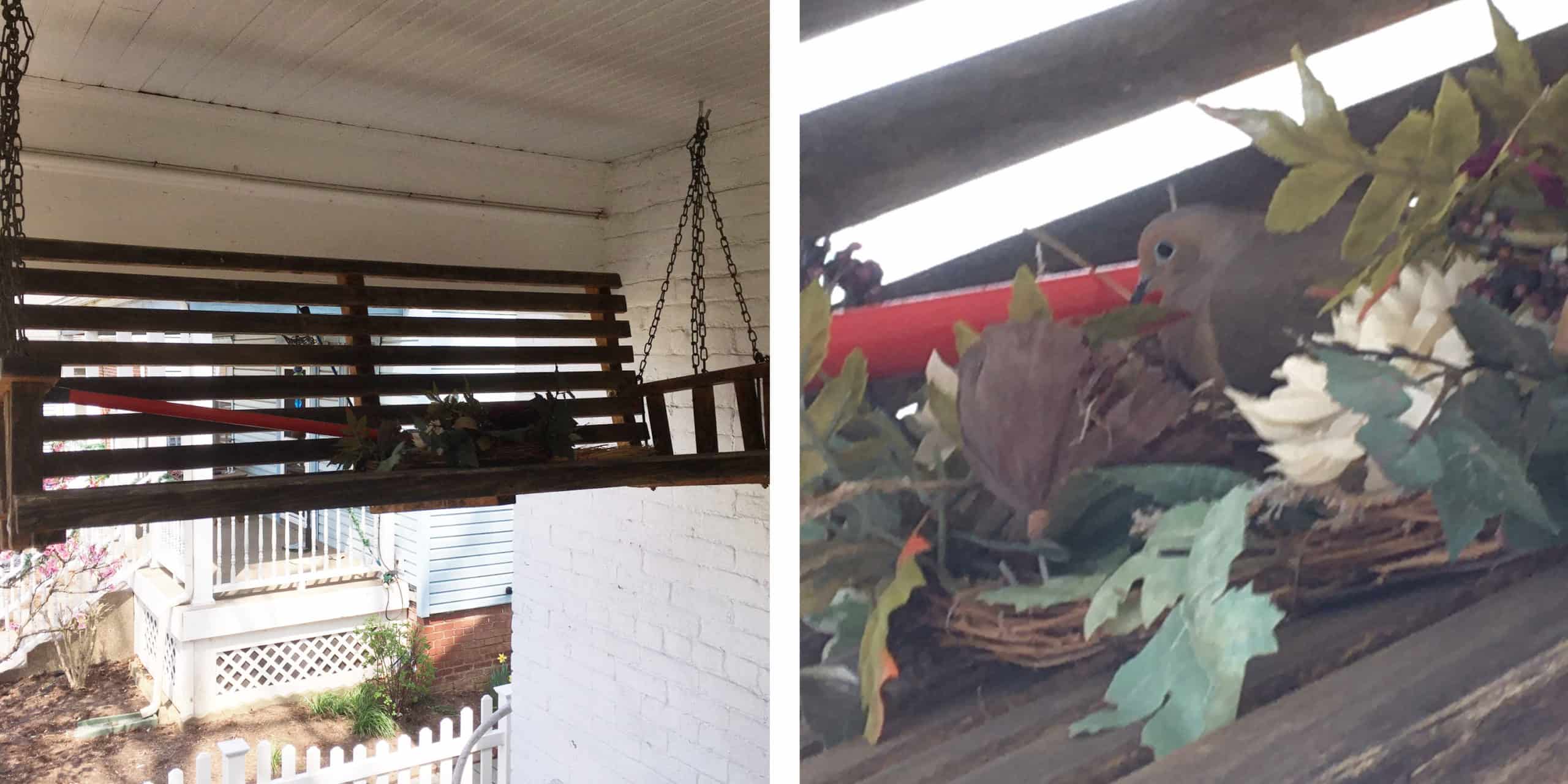
Meanwhile, on the other side of the porch, the porch swing remains stowed close to the ceiling for the winter. I stashed the grapevine door wreath on it for the holidays and forgot all about it. But apparently a morning dove thought it would serve as a convenient pre-fab foundation for a nest. Modos (from the bird banding code for MOurning DOve) sometimes build pretty lame, flimsy nests, and sometimes in just plain dumb locations, such as in rain gutters. This is quite a clever and secure nest site. I didn’t discover it until a few days ago, when the parents were already incubating full–time.
Mourning doves usually lay two eggs between 12 and 48 hours apart. Incubation usually begins with the second egg. Both parents share incubation responsibilities, although, because I can’t see the front porch from my home office, I’ve never seen a parental exchange. According to Birds of the World, mourning doves sometimes start another brood while nestlings are still present, although more often, a new clutch is started soon after the previous one fledges.
This “assembly line” production can continue throughout the season, it says, which means I might not have a porch swing this season. Bummer. But I’m willing to sacrifice if I can assist with bringing a healthy batch of mourning doves—or two—into the world. I might have to move my home office downstairs to keep an eye out the living room or kitchen windows for the next month to watch the nest action on my porch. I love that this is happening, but I hate that I’m missing out on what’s going on throughout the day just a flight of stairs away.
And that’s not all: While I was mowing my backyard last weekend, I discovered another modo nest in a short tree back there. That parental unit was not willing to leave the nest even with a noisy mower nearby! My property is truly a nursery this spring!

As I have written this happy little story, the rumbling whine and forceful revving of a chainsaw has provided the soundscape as a worker in a cherry-picker dismantles a big, old street tree one block away. Better, I suppose, that the tree comes down now, early in nesting season, than in a few weeks when leaves have emerged and many more birds will be nesting. Spring and early summer are the worst possible times of year for tree cutting and trimming. If you plan to cut or trim a tree one of these days, for the sake of nesting birds, I urge you to do it ASAP, or else wait until fall.

